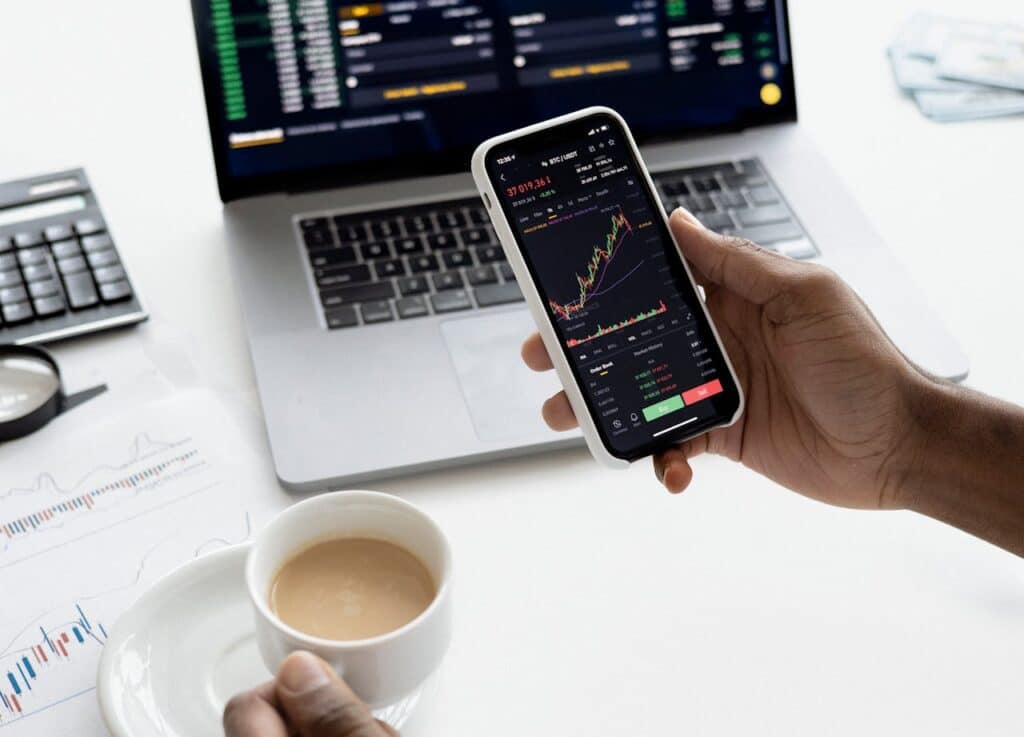How to open a demat account in India?

Open Demat Account Guide
Opening a demat account (short for “dematerialized account”) in India is an essential step for anyone looking to trade in the stock market. A demat account holds your shares and securities in electronic form, making the trading process more efficient and secure. Here’s a detailed step-by-step guide to help you through the process:
Step 1: Choose a Depository Participant (DP)
A Depository Participant (DP) acts as an intermediary between you and the depository (such as NSDL or CDSL). Banks, stockbroking firms, and financial institutions typically serve as DPs. Here’s how to choose one:
- Reputation: Choose a DP with a good reputation and reliable customer service.
- Charges: Compare the charges like account opening fee, annual maintenance charges (AMC), transaction charges, etc.
- Technology: Ensure they offer a good online platform and mobile app for trading and managing your account.
- Services: Look for additional services like research reports, investment advice, etc.
Step 2: Fill out the Account Opening Form

Visit the DP’s website or their branch to fill out the account opening form. Some DPs offer online account opening services, which can be more convenient.
Step 3: Submit Required Documents
You will need to submit the following documents:
- Identity Proof: PAN card, Aadhaar card, passport, voter ID, or driving license.
- Address Proof: Aadhaar card, passport, voter ID, driving license, utility bill, or bank statement.
- Bank Proof: Cancelled cheque or bank statement to link your demat account with your bank account.
- Passport-sized Photographs: Usually two recent photographs.
- Income Proof: For trading in derivatives, you might need to provide income proof like salary slips, income tax returns, etc.
Step 4: Verification Process
After submitting your documents, you will undergo an in-person verification (IPV) process. This can be done:
- In-Person: Visit the DP’s office for verification.
- Online: Some DPs offer e-KYC (electronic Know Your Customer) through video verification, where you can verify your identity via a video call.
Step 5: Sign the Agreement
Sign an agreement with your DP that outlines the rights and duties of both parties. This agreement is called the “Depository Participant-Client Agreement.”
Step 6: Receive Beneficiary Owner Identification (BO ID)
Once your application is processed and approved, you will receive a unique Beneficiary Owner Identification Number (BO ID). This ID is your demat account number, which you will use for all your trading and demat account-related transactions.
Step 7: Link Your Bank Account
Ensure your demat account is linked to your bank account. This allows seamless transfer of funds for trading activities. This linking is typically done during the application process using your bank proof.
Step 8: Start Trading
With your demat account active and linked to your bank account, you can now start trading. Log into your DP’s trading platform, transfer funds, and begin buying and selling shares.
Important Tips
- Security: Keep your account credentials secure and beware of phishing scams.
- Charges: Regularly review the charges associated with your account to ensure they remain competitive.
- Updates: Keep your contact information updated with your DP to receive timely updates and notifications.
Summary
- Choose a DP: Research and select a Depository Participant.
- Fill Out the Form: Obtain and complete the account opening form.
- Submit Documents: Provide the necessary identification, address, bank, and income proof.
- Verification: Complete the in-person or online verification.
- Sign Agreement: Agree to the terms with your DP.
- Receive BO ID: Get your unique demat account number.
- Link Bank Account: Ensure your bank account is linked.
- Start Trading: Begin trading with your activated demat account.
By following these steps, you’ll be well on your way to opening a demat account and engaging in the stock market.
But here are the more elaborate and exact way to open and operate a Demat account in India.

Step 1: Choose a Depository Participant (DP)
Factors to Consider
- Reputation and Reliability:
- Research online reviews and ratings of the DP.
- Check their track record and customer service responsiveness.
- Consider recommendations from friends or family who are experienced investors.
- Charges and Fees:
- Account Opening Charges: Some DPs charge a fee to open a demat account, while others may offer it for free.
- Annual Maintenance Charges (AMC): This is an annual fee for maintaining your account.
- Transaction Fees: Charges for each transaction you make (buying or selling securities).
- Other Fees: Charges for dematerialization, rematerialization, pledge, and unpledge services, etc.
- Technology and Platform:
- User-friendly online trading platforms and mobile apps.
- Features like real-time quotes, market analysis tools, and secure access.
- Additional Services:
- Research reports, investment advice, portfolio management services, etc.
Popular DPs in India
- Banks: ICICI Bank, HDFC Bank, SBI, Axis Bank.
- Brokerages: Zerodha, Dhan, Upstox, Angel Broking, Kotak Securities, Sharekhan.
Step 2: Fill Out the Account Opening Form
Methods to Fill the Form
- Offline:
- Visit the DP’s branch office.
- Request the account opening form and fill it out.
- Attach the necessary documents and submit them in person.
- Online:
- Visit the DP’s website and navigate to the account opening section.
- Complete the online application form.
- Upload scanned copies of the required documents.
- Some DPs might require an initial payment for fees, which can be done online.
Step 3: Submit Required Documents
Detailed List of Documents
- Identity Proof:
- PAN Card: Mandatory as per SEBI regulations.
- Aadhaar Card: For e-KYC.
- Passport, Voter ID, Driving License: As additional ID proofs.
- Address Proof:
- Aadhaar Card, Passport, Voter ID, Driving License: As address proofs.
- Utility Bills: Electricity, water, or telephone bills (usually not older than 3 months).
- Bank Statement: Recent statement with the address.
- Bank Proof:
- Cancelled Cheque: Must have your name printed on it.
- Bank Statement: Recent statement showing bank account details.
- Passbook Copy: First page with your account details and photograph.
- Income Proof (for trading in derivatives):
- Salary Slips: Last 3 months.
- Income Tax Returns (ITR): Last financial year’s returns.
- Form 16: Issued by your employer.
- Photographs:
- Passport-sized Photos: Usually two recent photographs.
Step 4: Verification Process
In-Person Verification (IPV)
- Offline IPV:
- Visit the DP’s branch or a designated office.
- Show your original documents for verification.
- Sign the form in front of the DP’s representative.
- Online IPV (e-KYC):
- Complete the verification through a video call.
- Show your original documents during the video call.
- You might be asked to hold up your PAN card and Aadhaar card to the camera.
Step 5: Sign the Agreement
Agreement Details
- Depository Participant-Client Agreement:
- Outlines the rights and obligations of both the client and the DP.
- Ensure you read and understand the terms before signing.
- Keep a copy of the signed agreement for your records.
Step 6: Receive Beneficiary Owner Identification (BO ID)
Account Details
- BO ID:
- A unique 16-digit number provided by NSDL/CDSL.
- This ID will be used for all future transactions and correspondence.
- Login Credentials:
- User ID and password for accessing the DP’s online trading platform.
Step 7: Link Your Bank Account

Bank Account Linking
- For Fund Transfers:
- Ensure your bank account is correctly linked for seamless transactions.
- This is typically done using the cancelled cheque or bank statement you provided.
- Benefits:
- Easy transfer of funds for buying securities.
- Direct credit of dividends, interest, and redemption amounts to your bank account.
Step 8: Start Trading
Getting Started
- Log in: Use the credentials provided by your DP to log into the trading platform.
- Explore the Platform:
- Familiarize yourself with the interface.
- Explore features like market watchlists, stock search, research reports, and trade execution.
- Add Funds:
- Transfer funds from your bank account to your trading account.
- Place Orders:
- Buy and sell securities by placing orders through the platform.
- Monitor your investments and portfolio performance regularly.
Additional Tips and Considerations
Security Measures
- Password Protection: Keep your account credentials confidential.
- Two-Factor Authentication (2FA): Enable 2FA for enhanced security.
- Beware of Phishing Scams: Do not click on suspicious links or share your details with unknown sources.
Regular Monitoring
- Review Charges: Periodically review the charges and fees associated with your account.
- Update Information: Keep your contact information updated with your DP.
- Account Statements: Regularly check your account statements for any discrepancies.
Educational Resources
- Webinars and Tutorials: Many DPs offer educational resources to help you understand trading strategies, market analysis, and the use of their platforms.
- Research Reports: Utilize research reports provided by your DP to make informed investment decisions.
By following these steps and tips, you’ll be well-prepared to open a demat account and begin your journey into the stock market.